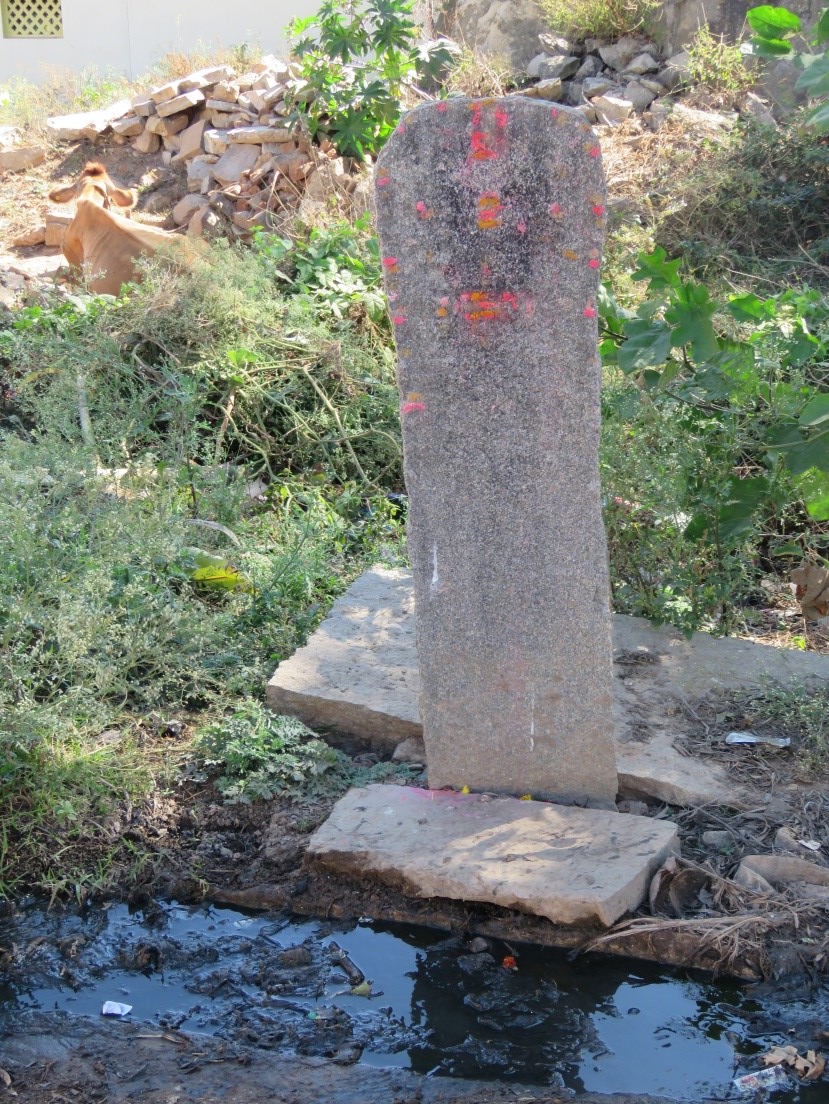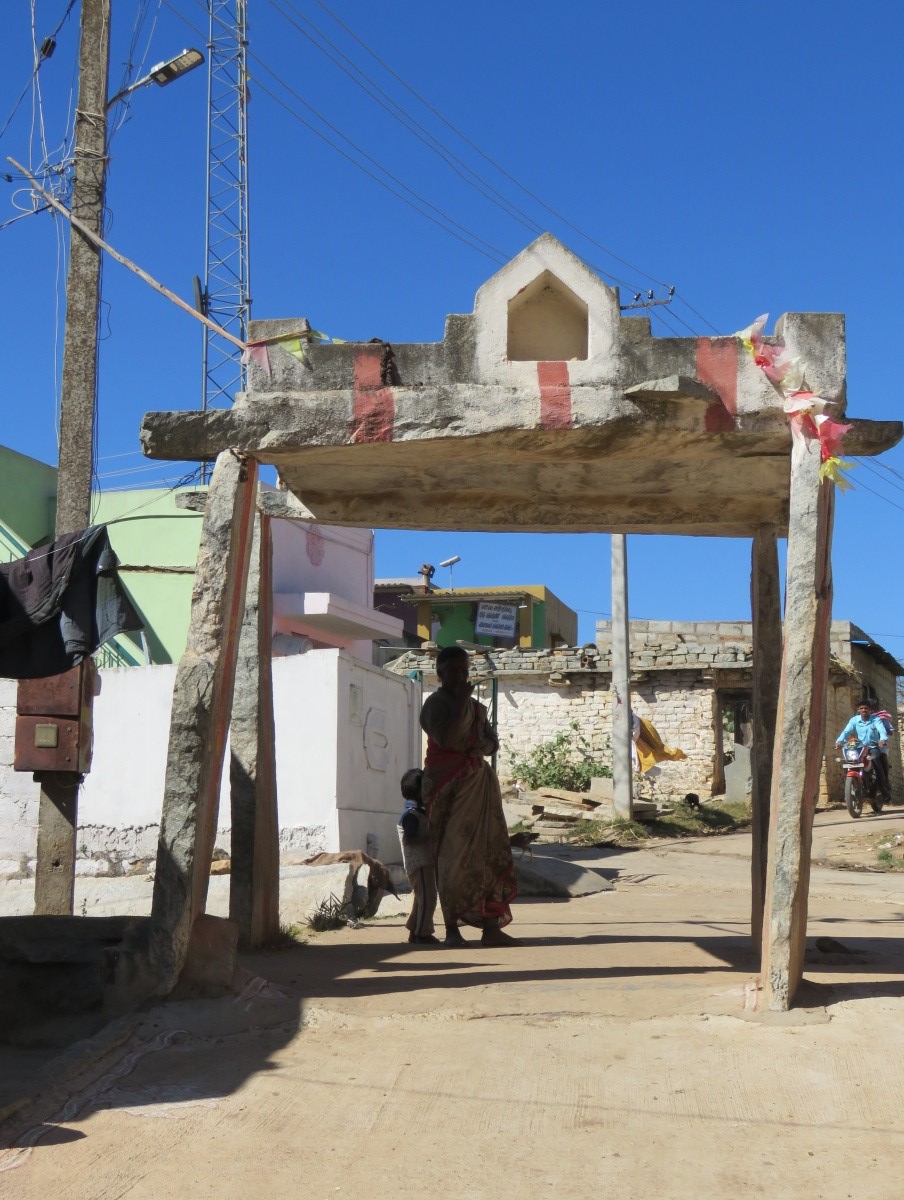Blog post 2 of 8 (Part C: Village Kaethanahalli)
EOD_4th January 2019
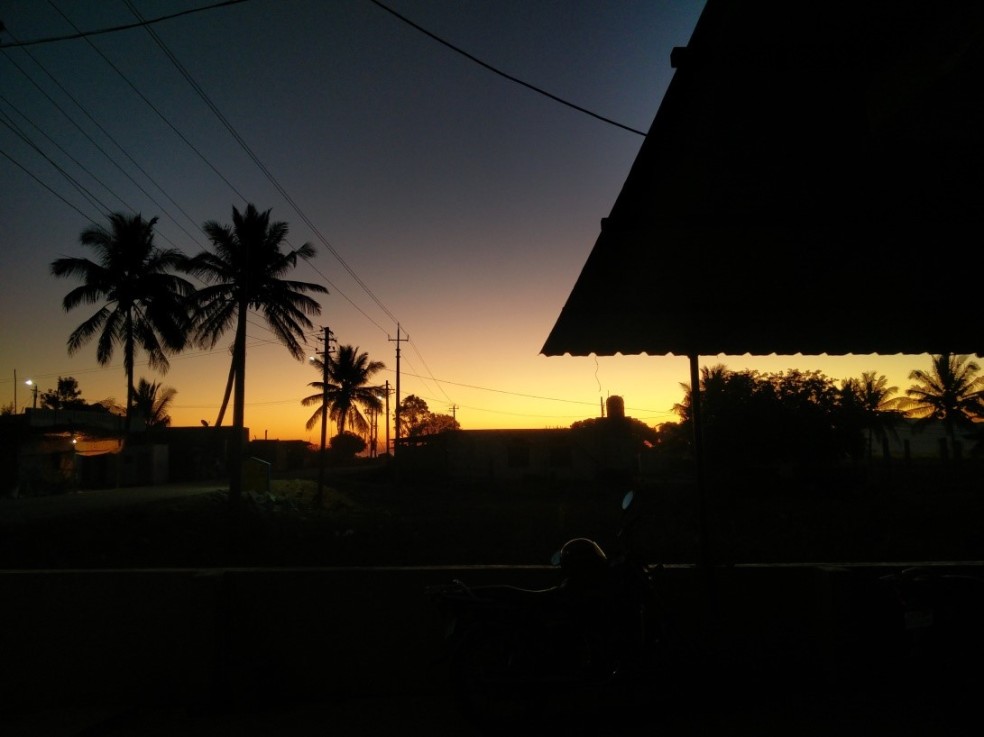
What a day!
What a beautiful village Kaethanahalli is!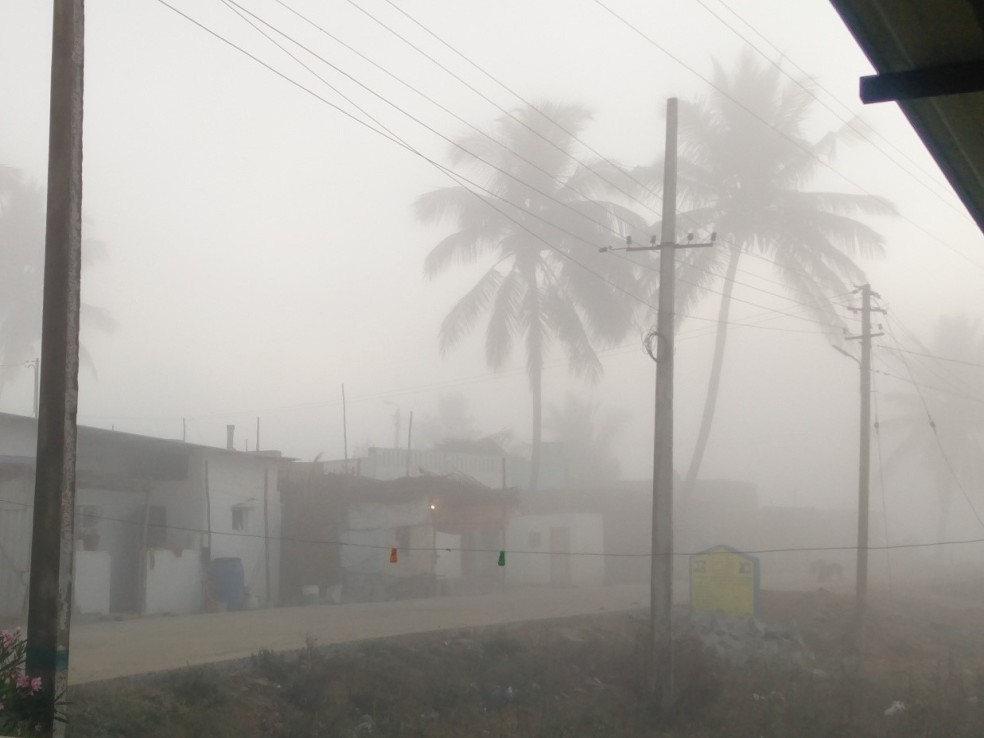

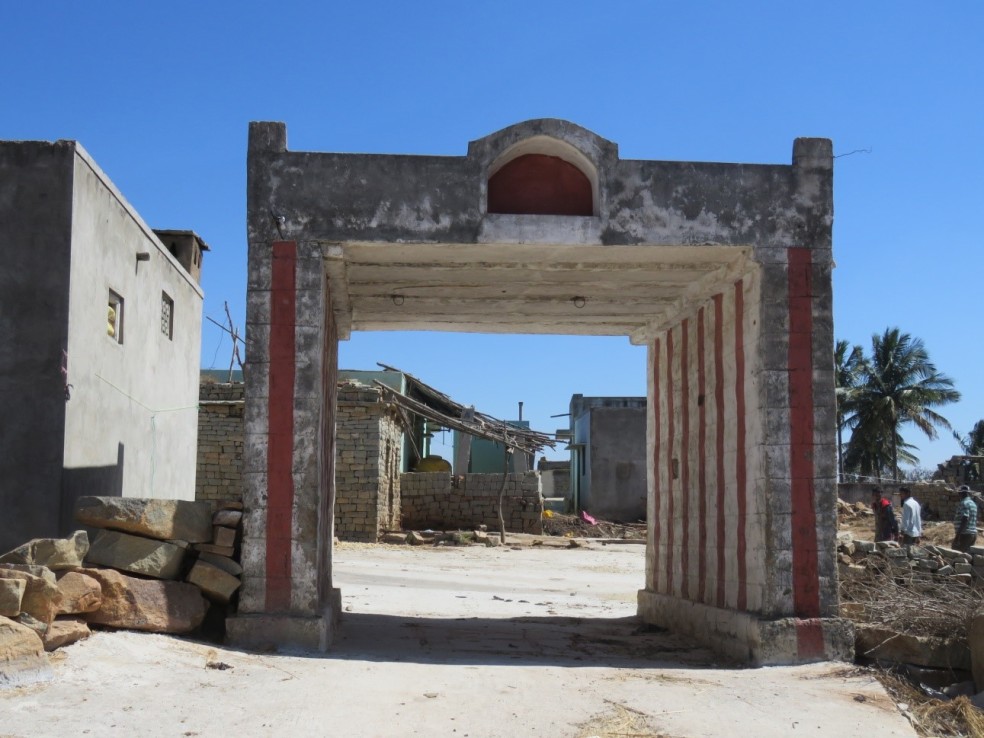
Exception:
The conversation with the Vaastu consultant.
Damn! If our questions lasted for 10 seconds, his answers lasted for an hour. Full on Telugu! I did not understand. But, I am hoping we got the answers for the asked questions. Technology to the rescue! I want to send the videos of both the interview and the Spear test. (We had the villagers help us this time. It went in 3″).
Otherwise,
Observations
1. Staggered housing layouts
Linear staggered row housing, something that I didn’t notice elsewhere. This gave that triangular piece of land for each house along the stretch.
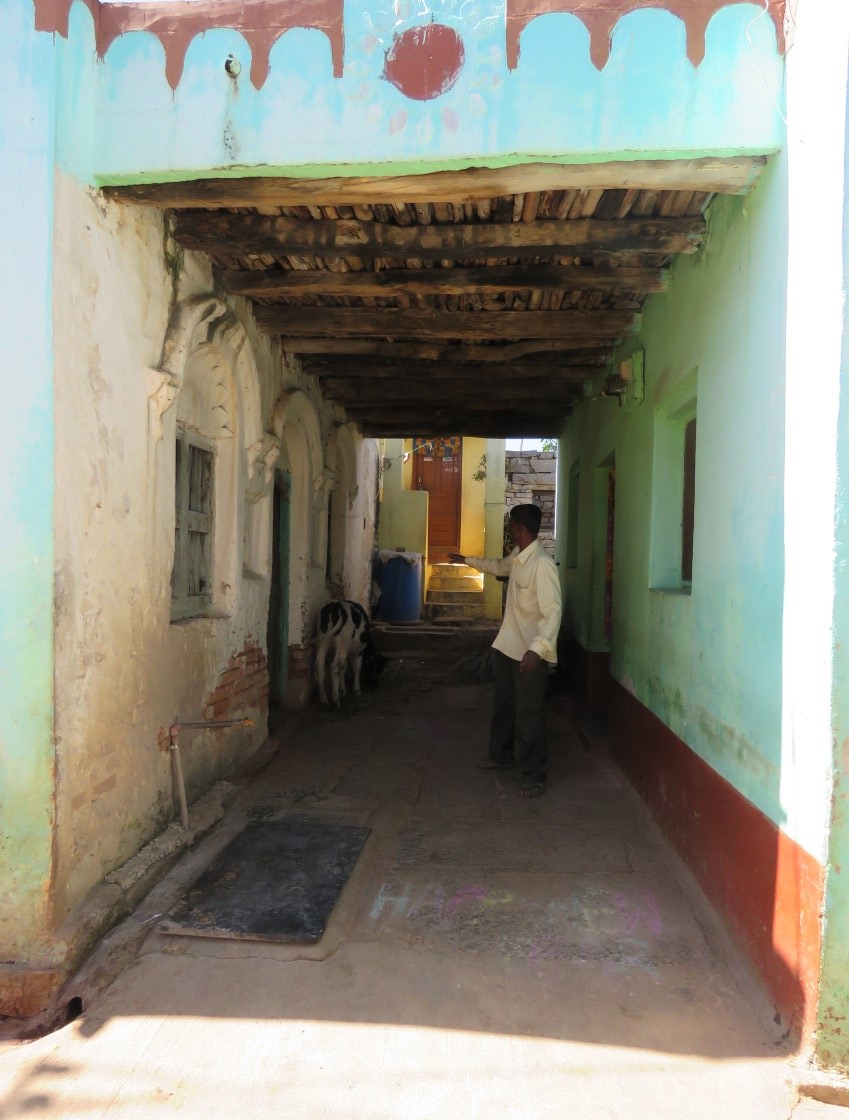 2. Predominant use of stone (blocks for walls and slabs for roof) as a building material
2. Predominant use of stone (blocks for walls and slabs for roof) as a building material
Especially the old houses are found to have used stone blocks with mud mortar. And, the other material that finds itself in a parallel significance is our very own mud blocks.
 3. Territorial mark and approach to the house through kolam is more prominent
3. Territorial mark and approach to the house through kolam is more prominent
On staring at the pretty stone Façade of a built structure which looked abandoned from the outside, it was quite difficult for me to figure out if it was a house or a shed that had been semi demolished. Suddenly, my eyes caught this sudden trail of kolam starting from the outside going all the way to a narrow lane. To my surprise, it was an occupied house with an entry from the side. It was beautiful.
4. Multi use of a single room
Here, there were several small houses housing more than a family. So there seemed to be a need to accommodate more than a single function. A 6’x 6′ or 7′ x7′ was used as a living space, kitchen, puja, bedroom and store room.
5. Storage Typology
I should have mentioned it yesterday it self. Anyways, here in Chikkaballapur, the storage of Ragi is done not in sacks but in huge mud pots. Like, HUGE.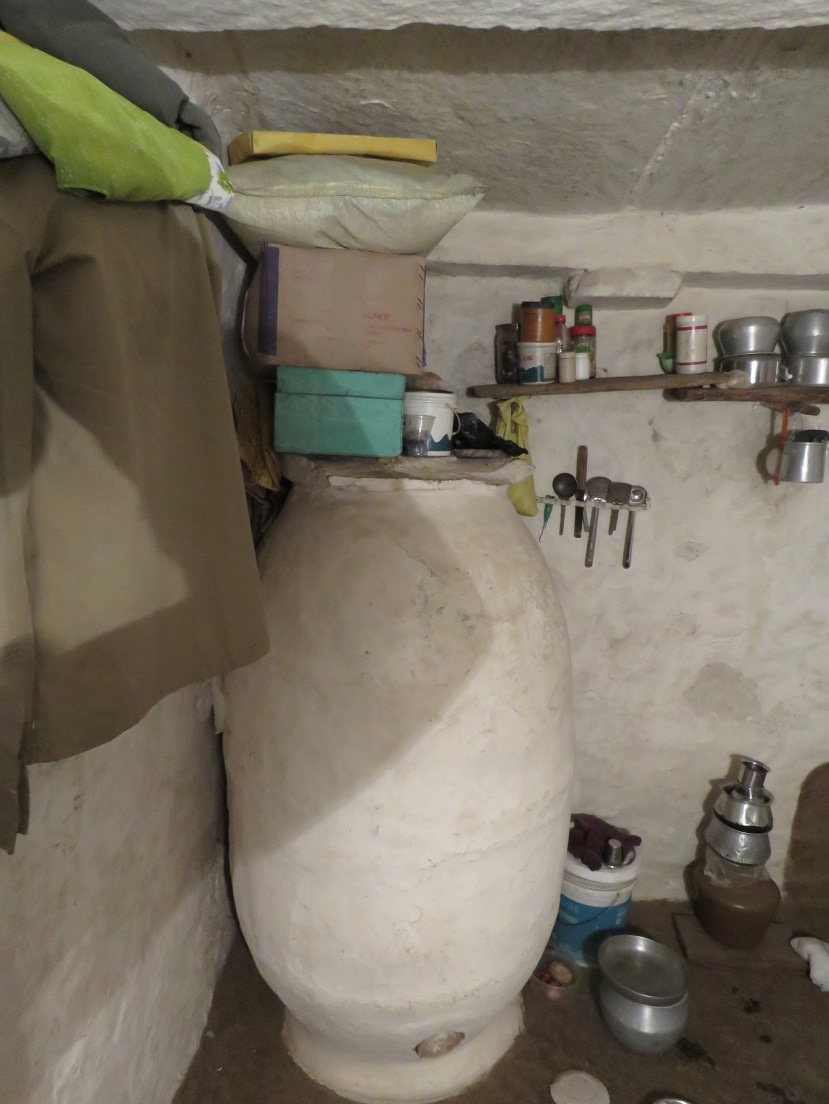
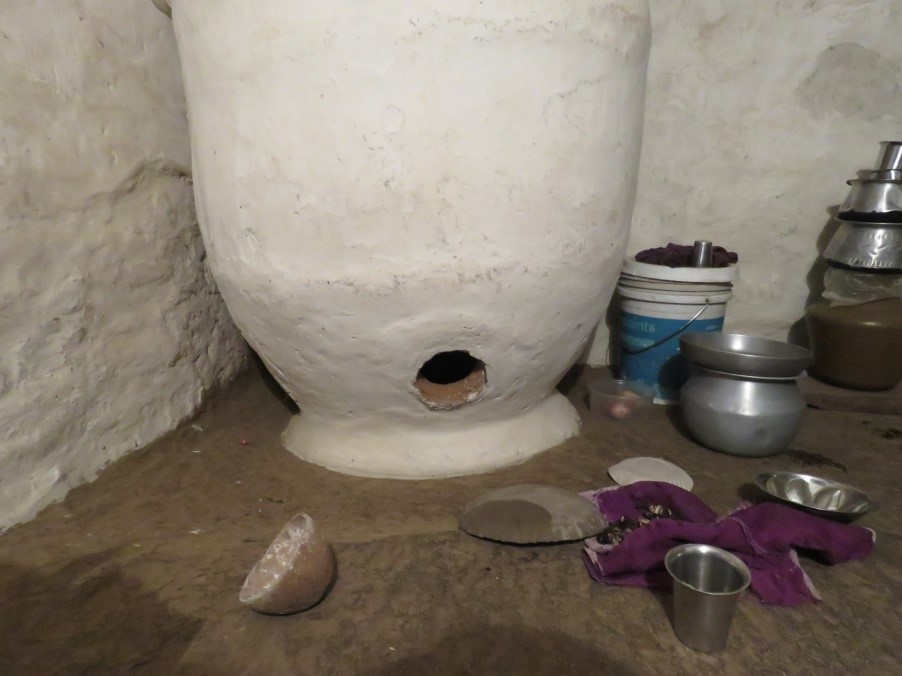
During my visit of the houses in ittepanahalli, I came across a house that used these pots as a partition to demarcated kitchen and living space.
6. Limited floor fixed Grinder (I forgot the Telugu equivalent)
Unlike the previous four villages, it was found to be very limited.
7. RCC roof by choice
Why?
Because, currently, the grains are being dried on roads. Having an RCC flat roof will allow them to dry it on their own roof. It also helps keep away the rodents and hens which otherwise would be a problem.
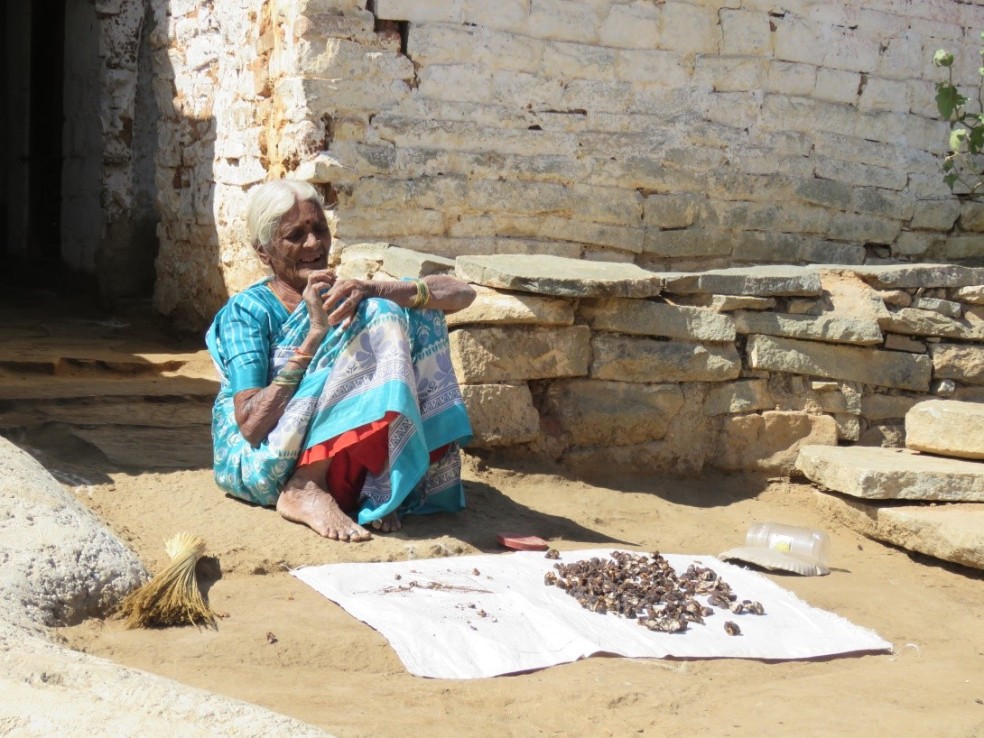
8. Water supply
Water is being supplied through tankers with a capacity of 2000L feeding five houses.
9. Radial roads
I am not sure about the actual settlement layout. But, I perceived the settlement to have roads radiating from the central space or the big community Katte.
10. Steps as a significant feature
Not all! But, on a comparative scale, I felt that even the smallest of houses had a flight of stairs to the terrace; something I did not observe elsewhere.
 11. Commercialization of a part of the house (Attached shops)
11. Commercialization of a part of the house (Attached shops)
Chikkaballapur in general seemed to have more than two houses have attached shops to them.
Hoping to find more villages like Kaethanahalli!
Interesting features around the village: